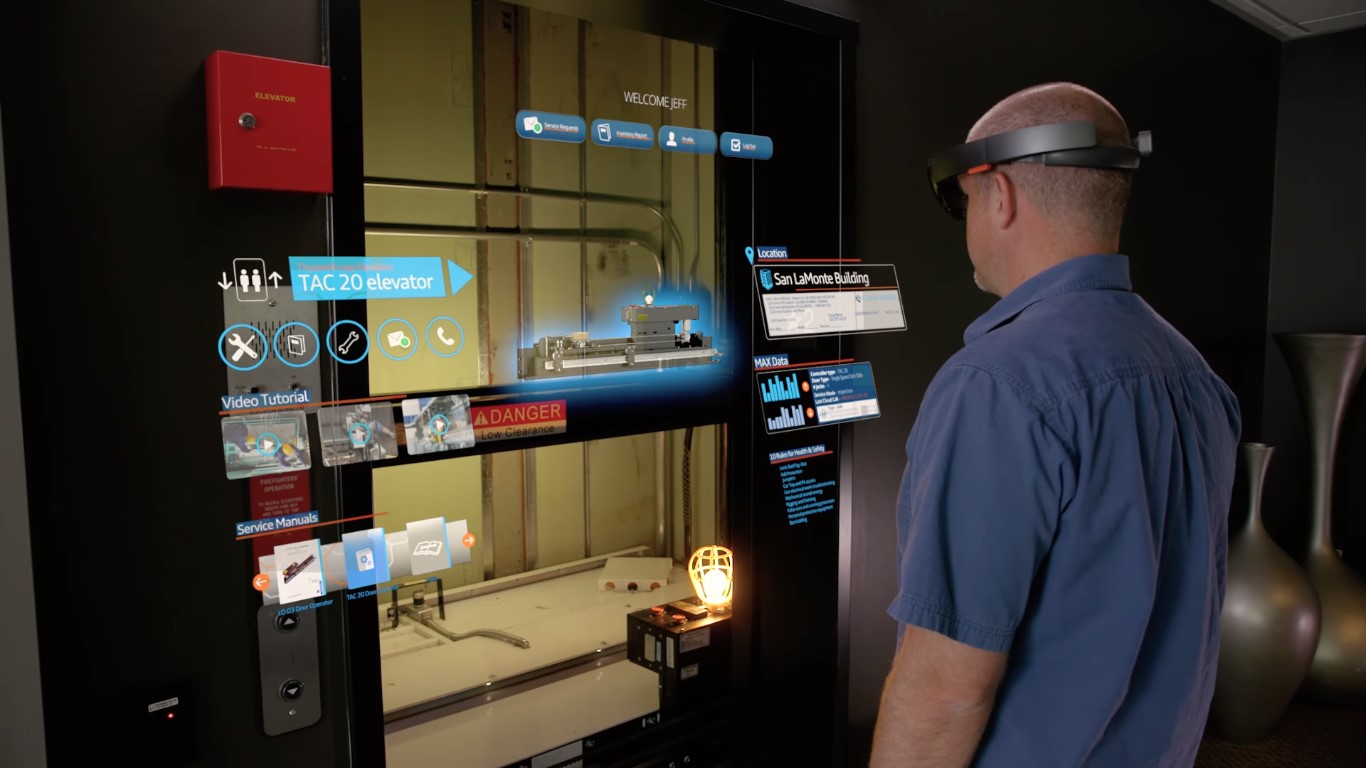Home>Latest News>Technology Trends>AR for Business: Enhancing the Corporate World


Technology Trends
AR for Business: Enhancing the Corporate World
Modified: September 5, 2024
Discover the latest technology trends in AR for business and learn how it's transforming the corporate world. Stay ahead with our expert insights and analysis.
(Many of the links in this article redirect to a specific reviewed product. Your purchase of these products through affiliate links helps to generate commission for Techsplurge.com, at no extra cost. Learn more)
Table of Contents
Introduction
Augmented Reality (AR) has gained significant attention in the tech industry over the past few years. Its applications are being explored in various sectors, including business. Integrating AR into corporate environments can enhance operations, boost employee productivity, and provide a competitive edge. This article explores AR in business, covering its current applications, potential benefits, and future prospects.
What is Augmented Reality?
Understanding AR is crucial before discussing its business applications. Augmented Reality overlays digital information onto the real world using a device's camera. This includes virtual objects, text, images, and other interactive elements that enhance user experience. Unlike Virtual Reality (VR), which creates a completely virtual environment, AR blends digital and physical worlds for a more immersive experience.
Current Applications in Business
Training and Onboarding
Interactive Training Modules
AR creates interactive training modules simulating real-world scenarios. In manufacturing, AR guides new employees through the assembly process, highlighting critical steps and providing real-time feedback.
Virtual Workshops
Companies use AR to conduct virtual workshops, allowing remote teams to participate in interactive sessions that mimic in-person training.
Product Design and Development
Prototyping
AR helps create 3D prototypes of products, allowing designers to visualize and interact with them in real-time. This reduces the need for physical prototypes and speeds up the design process.
Customer Feedback
By overlaying virtual models of products onto real-world environments, companies gather customer feedback on product placement and usability.
Marketing and Sales
Virtual Showrooms
AR transforms physical showrooms into virtual ones, allowing customers to explore products in a more immersive way. This is particularly useful for luxury brands or complex products.
Interactive Ads
Companies create interactive ads using AR to provide additional information about products, such as tutorials or product demos.
Customer Service
Virtual Assistants
AR-powered virtual assistants help customers navigate stores, find products, and receive assistance without human intervention.
Remote Support
AR provides remote support to customers, allowing technicians to guide users through troubleshooting steps in real-time.
Real Estate
Virtual Property Tours
Real estate agents use AR to provide virtual property tours, allowing potential buyers to explore properties remotely.
Interior Design
AR helps homeowners visualize interior design changes by overlaying virtual furniture and decor onto their living spaces.
Potential Benefits
Improved Efficiency
AR streamlines processes by providing step-by-step instructions and real-time feedback, reducing the need for manual documentation and minimizing errors.
Enhanced Customer Experience
Offering immersive and interactive experiences, AR enhances customer engagement and satisfaction. Examples include virtual try-ons in fashion stores or virtual product demonstrations in electronics stores.
Cost Savings
AR reduces costs associated with physical prototypes, travel for training, and manual documentation. It also helps in reducing the time required for product development and deployment.
Competitive Advantage
Companies adopting AR technology early gain a competitive edge by offering innovative and engaging experiences to their customers and employees.
Data Collection and Analysis
AR provides valuable data on customer behavior and preferences, which can be used to improve marketing strategies and product development.
Challenges and Limitations
Technical Requirements
AR requires specific hardware and software, including high-resolution cameras and powerful processors. This can be a barrier for companies with limited technical resources.
User Adoption
Some users may find AR technology intimidating or difficult to use, especially if they are not familiar with it. Training and support are essential to ensure smooth adoption.
Cost
While AR can save costs in the long run, the initial investment in hardware and software can be significant. Small and medium-sized enterprises (SMEs) might find it challenging to justify the expense.
Data Security
As with any technology that collects user data, there are concerns about data security and privacy. Companies must handle user data responsibly and comply with relevant regulations.
Future Prospects
Advancements in Hardware
Improvements in smartphone cameras and the development of dedicated AR glasses are expected to enhance the AR experience, making it more accessible and affordable.
Increased Adoption
As more companies adopt AR technology, it is likely to become more mainstream, driving innovation and reducing costs associated with development and deployment.
Integration with Other Technologies
AR is expected to integrate seamlessly with other technologies like IoT, AI, and blockchain, further enhancing its capabilities and applications.
Regulatory Frameworks
Governments and regulatory bodies are likely to establish clearer guidelines and standards for the use of AR in business, addressing concerns around data privacy and security.
Final Thoughts
Augmented Reality holds significant potential for transforming the corporate world by improving operations, boosting employee productivity, and providing a competitive edge. Despite challenges and limitations, the potential benefits make it an exciting technology to watch. As hardware and software continue to evolve, expect more widespread adoption of AR in various business sectors. Companies embracing this technology early will be well-positioned to reap the rewards of an immersive and interactive future.

